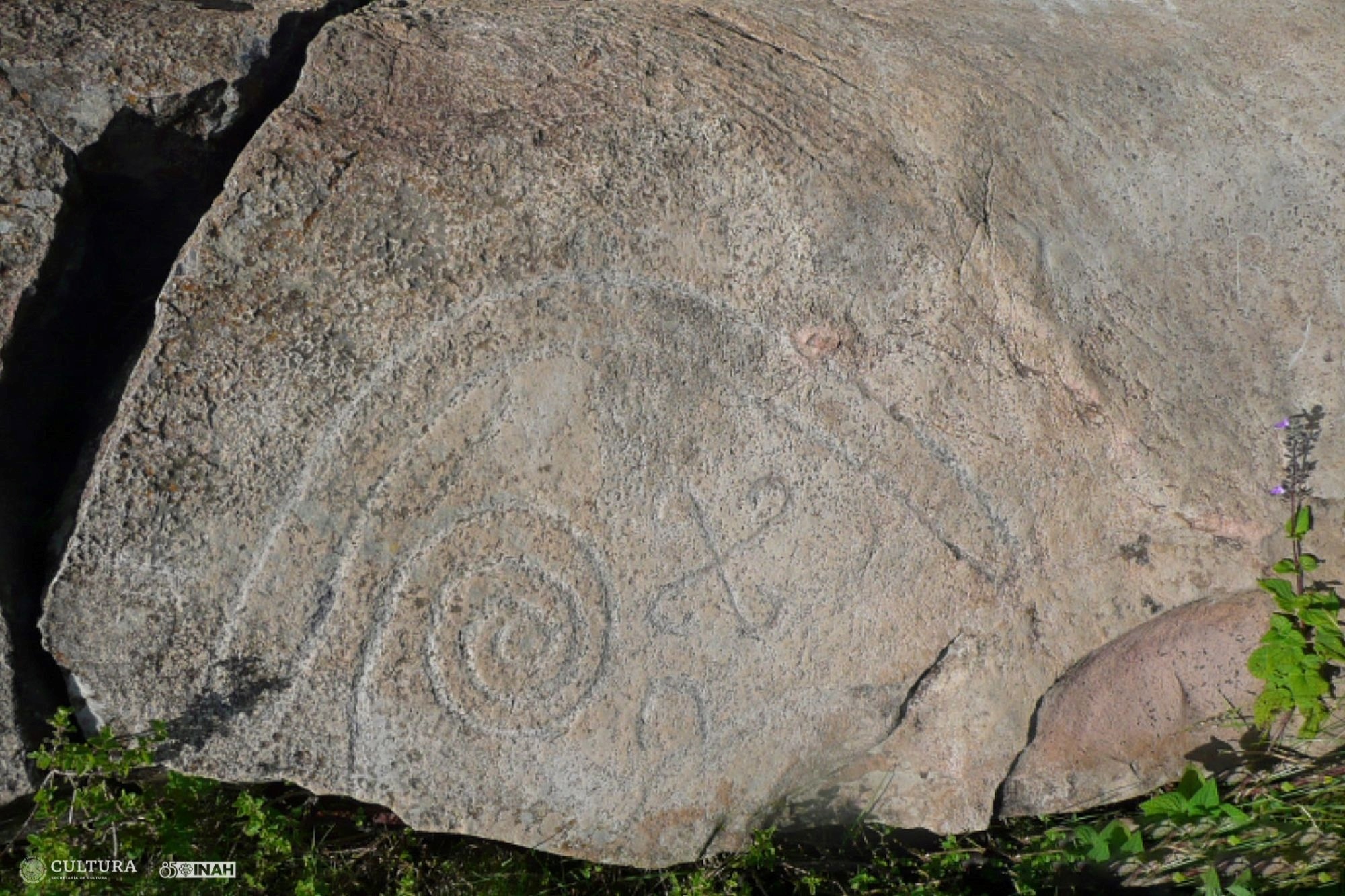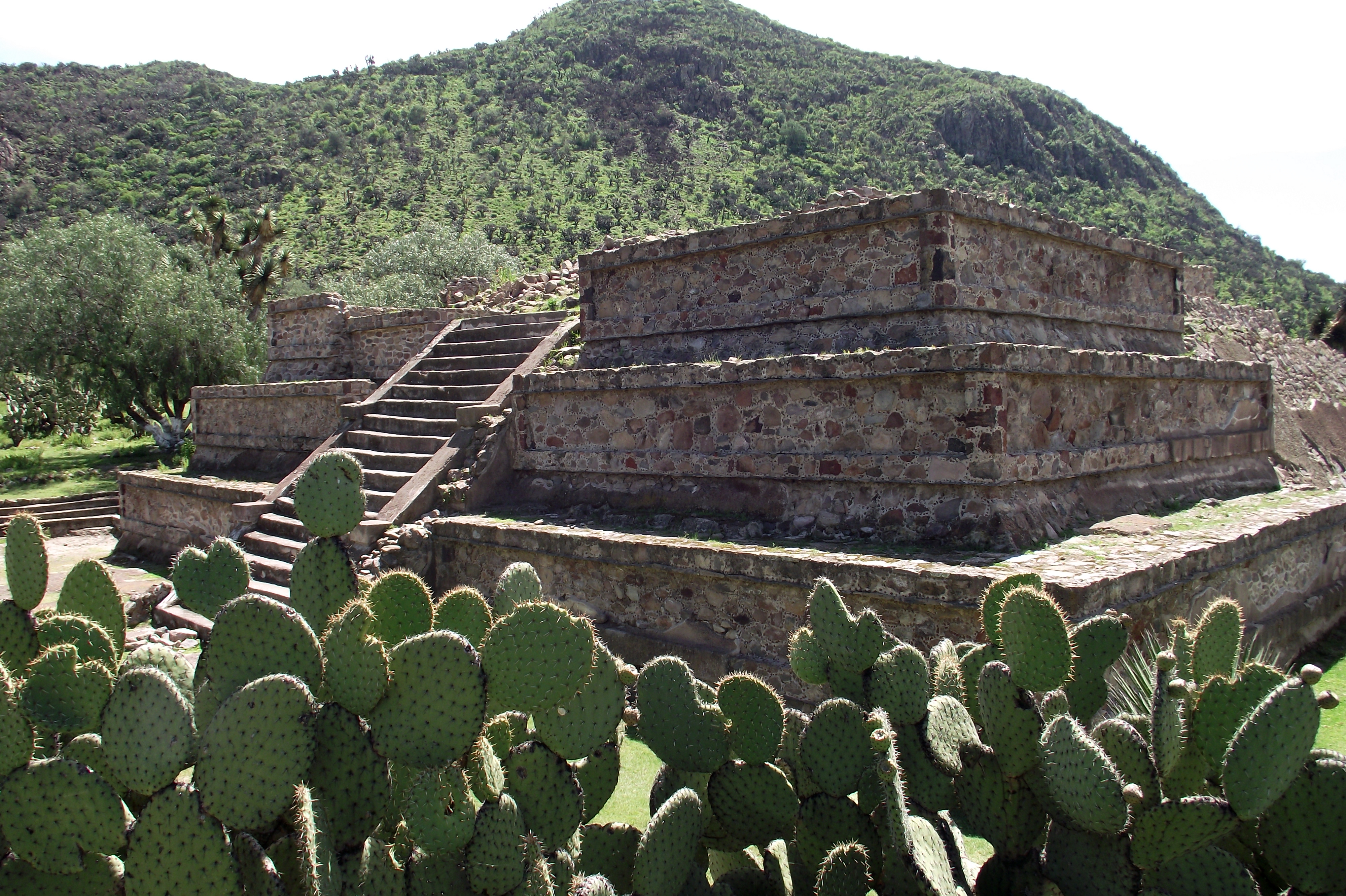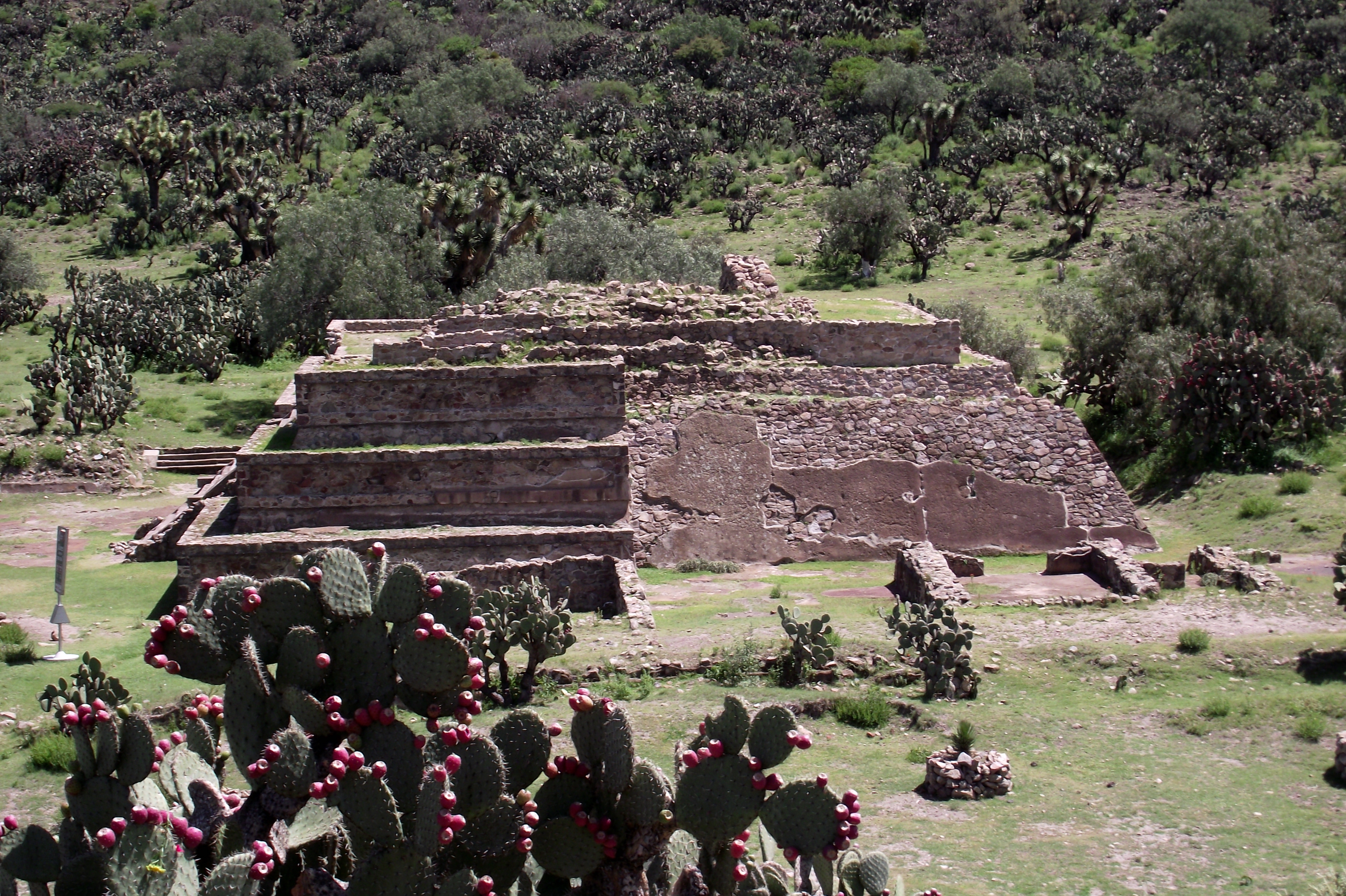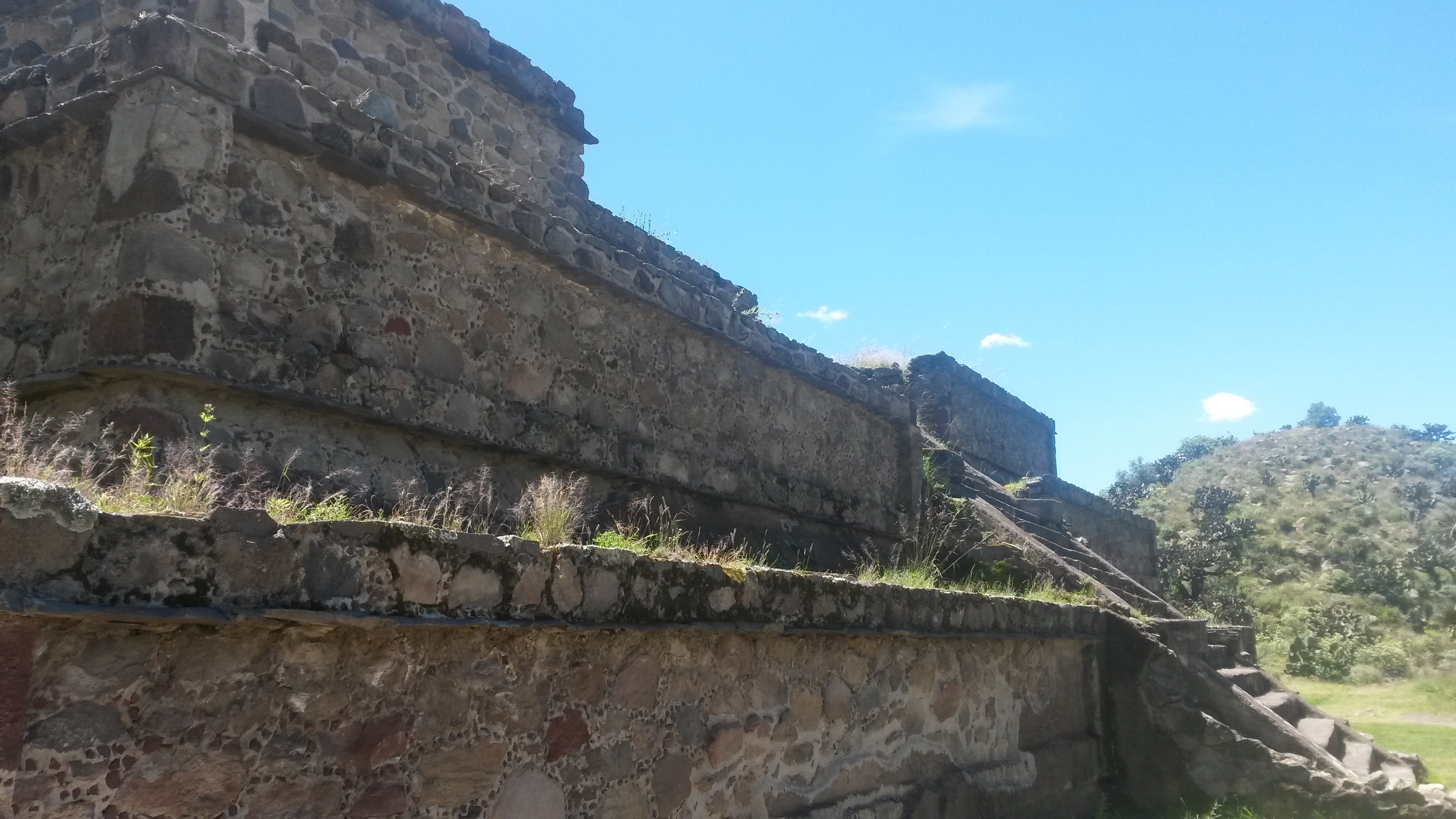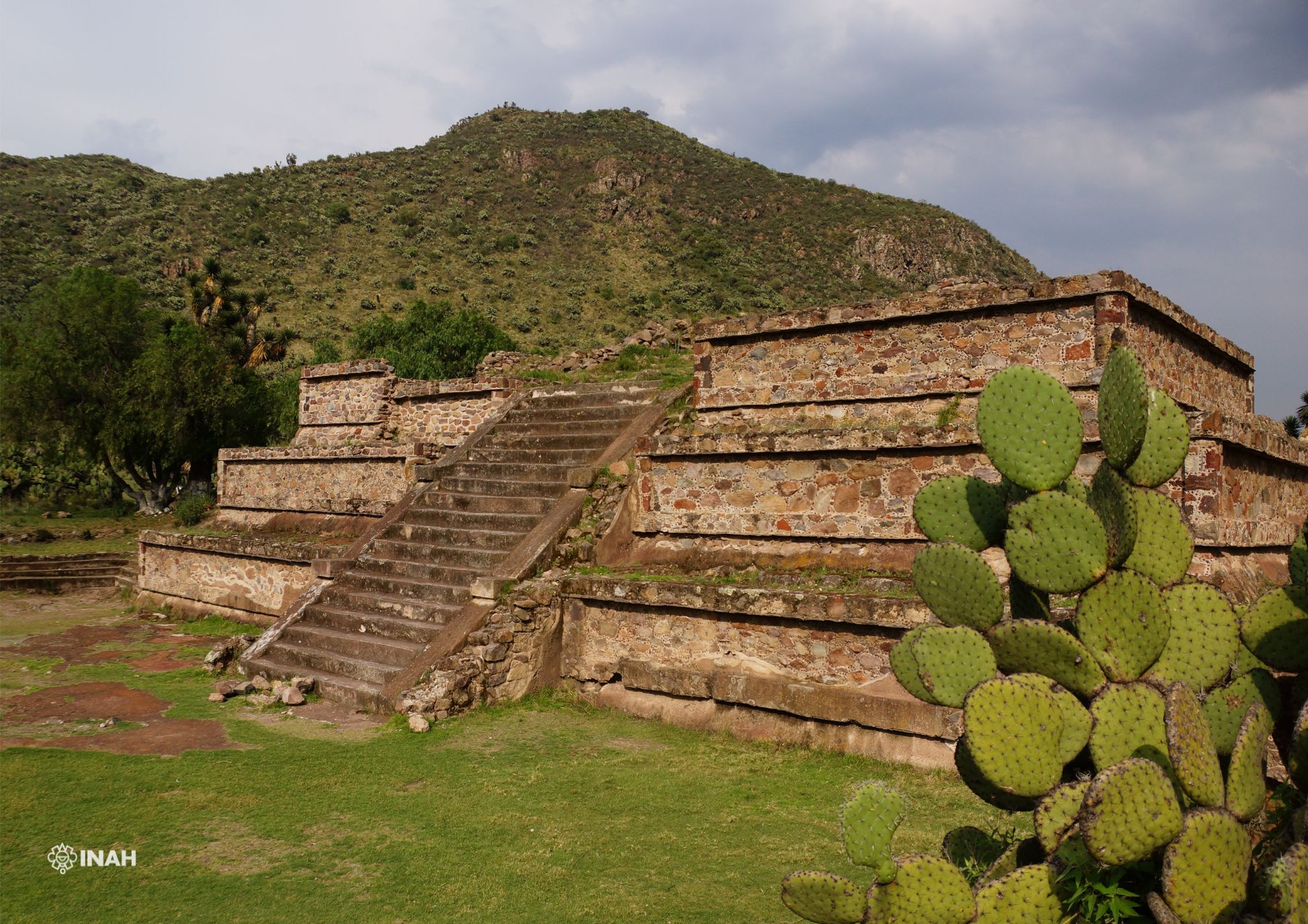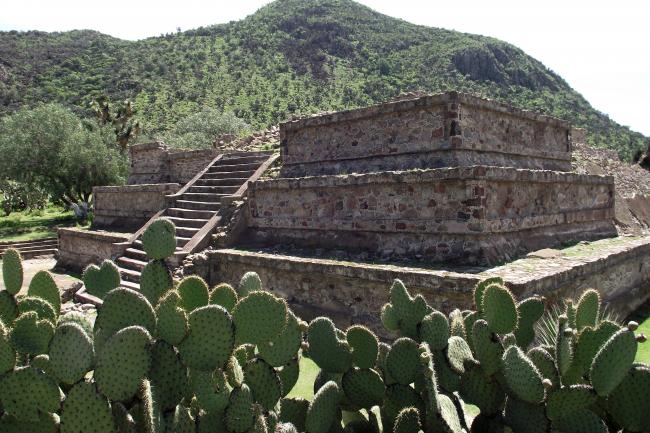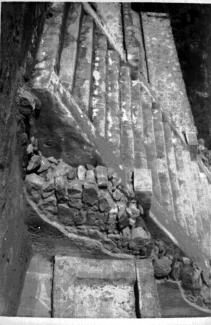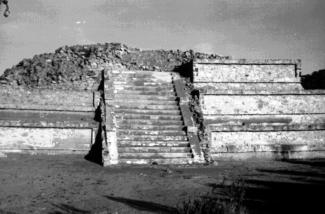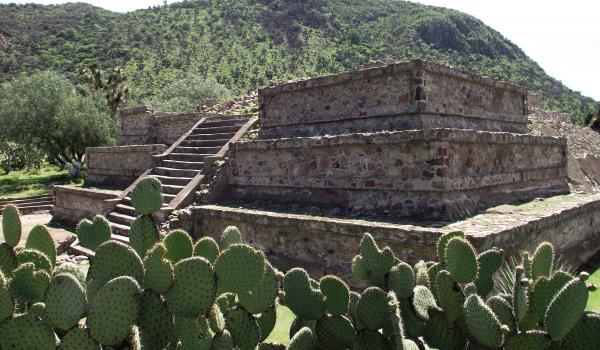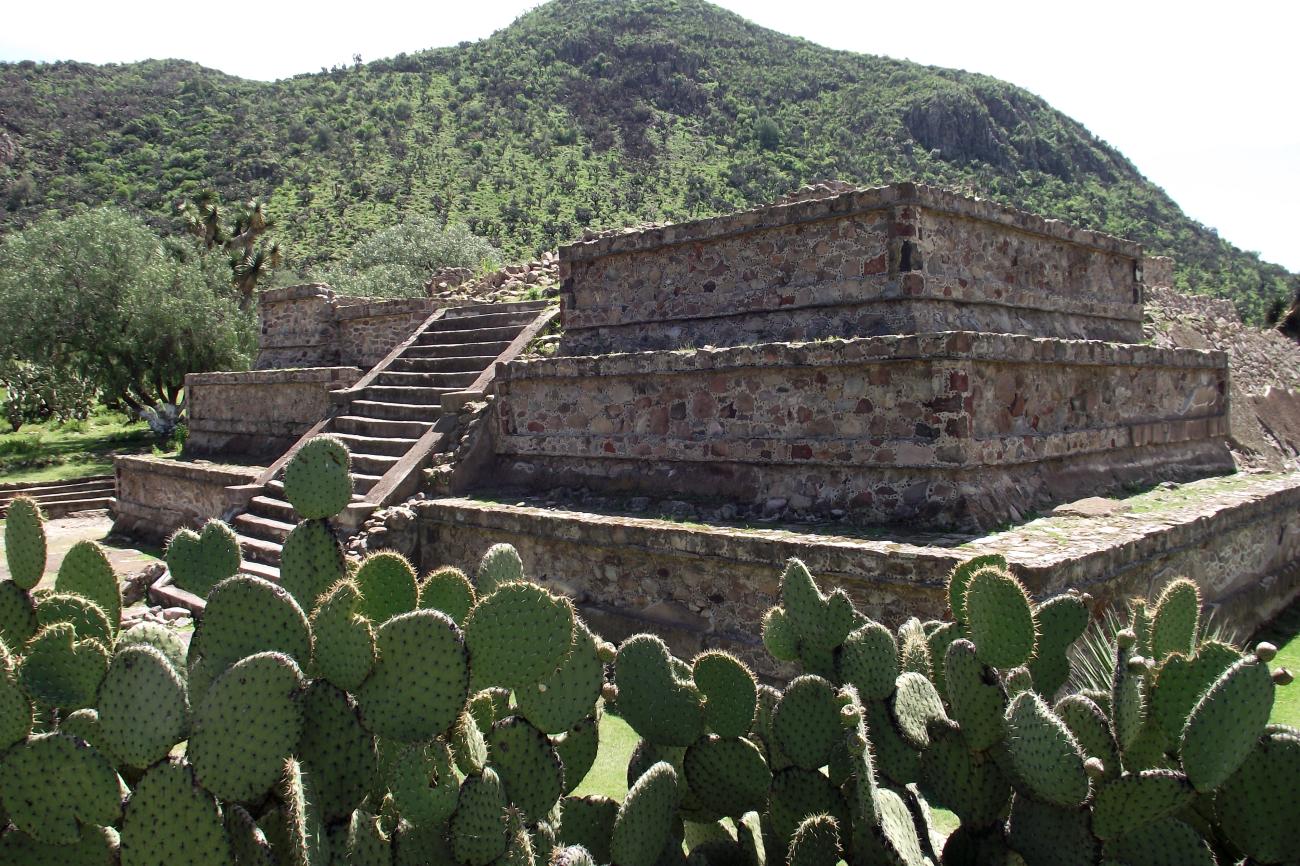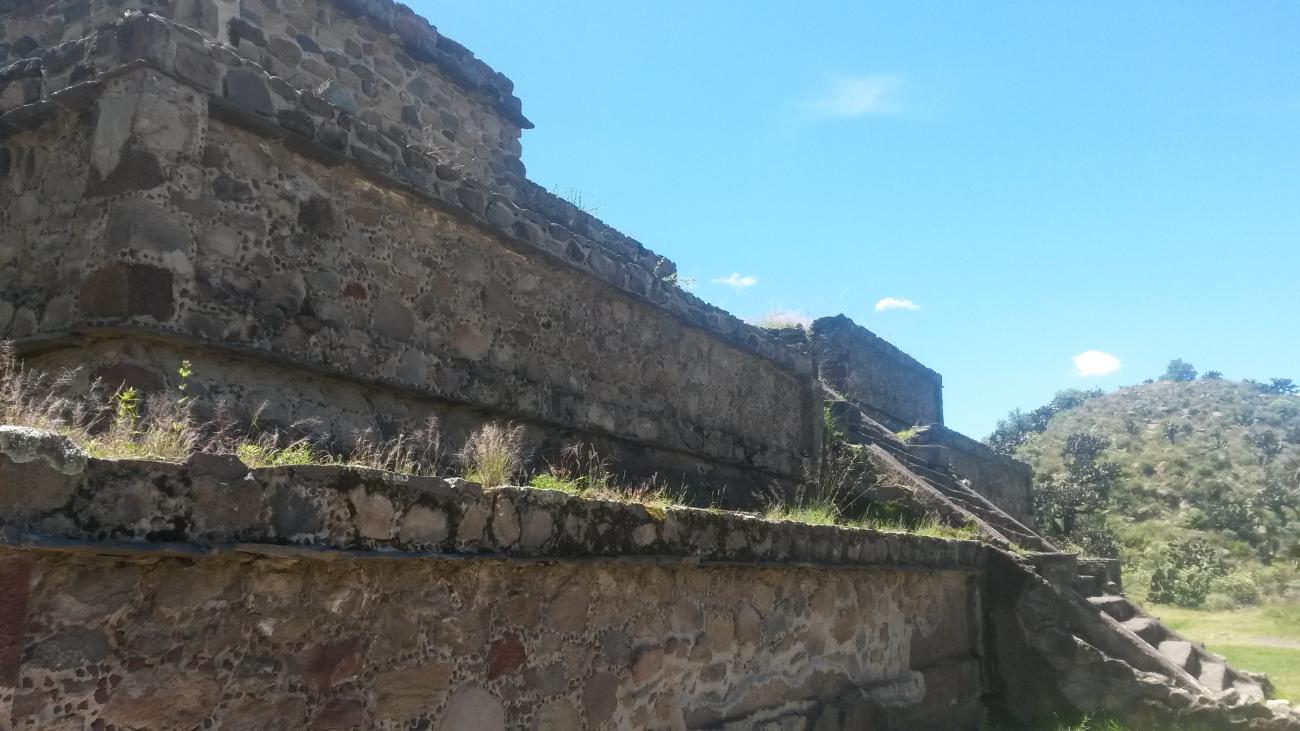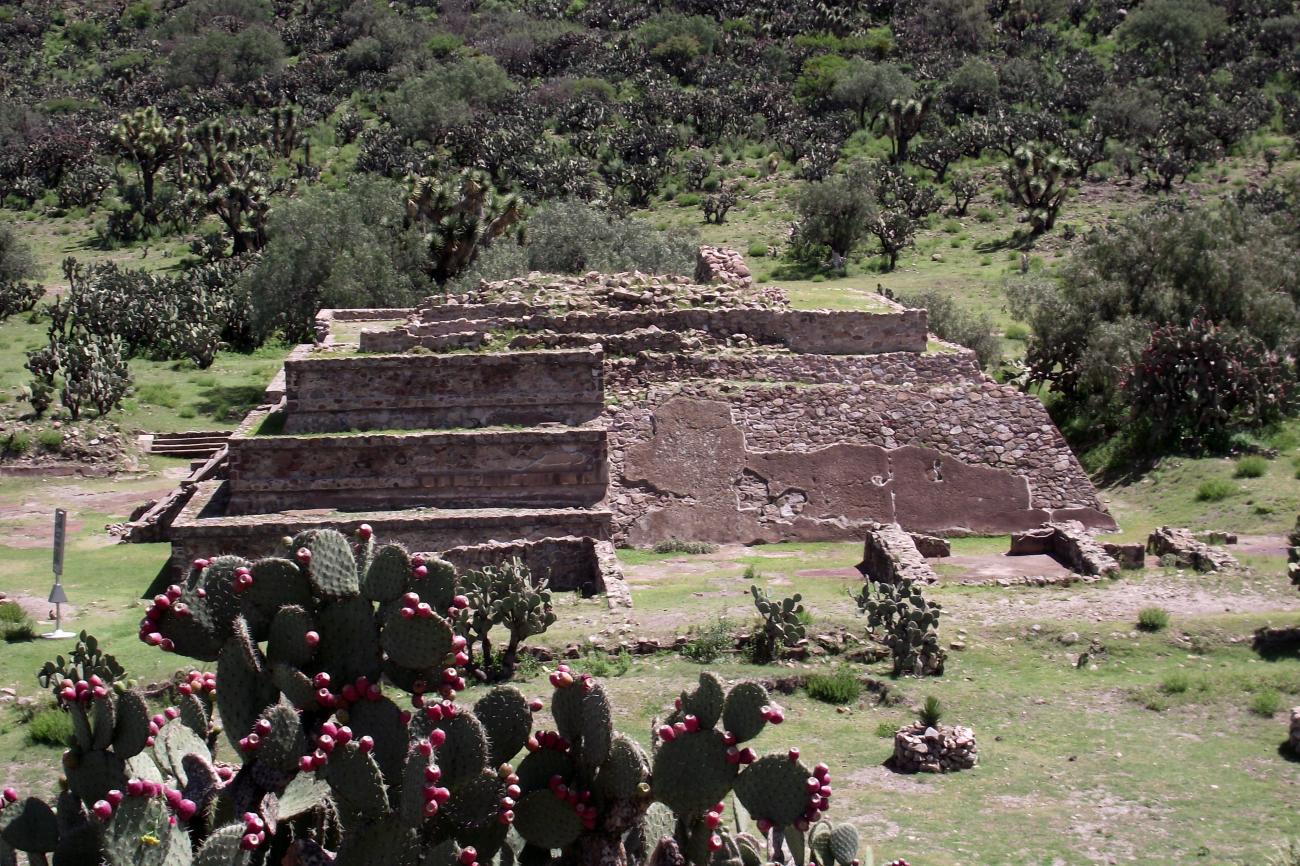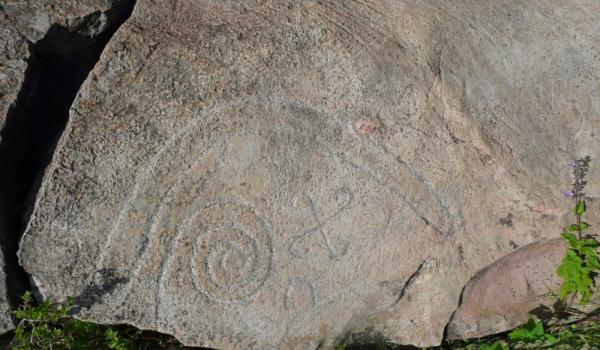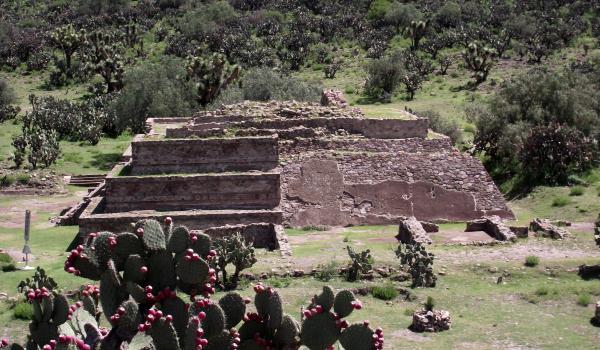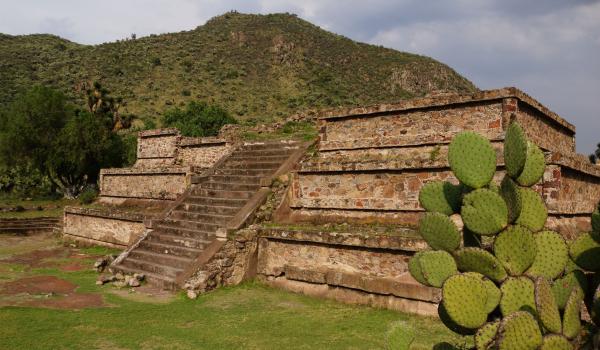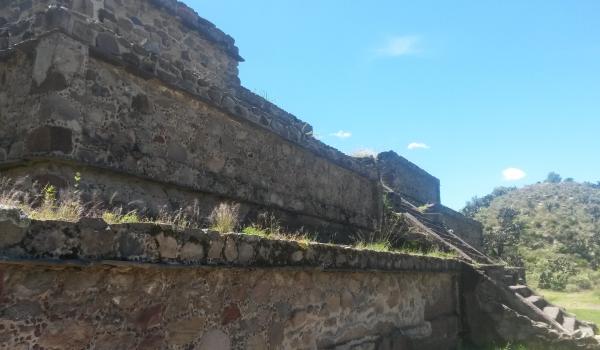The site’s archeological monuments cover an area close to half a square mile. The site had three periods of occupation. Very ancient rock paintings in red pigment of hands, faces and simplified human figures are evidence of the site’s first human occupation. The second period, in the Classic from 200 to 650 AD, was the most important for the site. Xihuingo was at its peak in terms of size, as the majority of its monuments were built at this time. At this stage of the city’s development there were strong ties to the political, economic and cultural system of Teotihuacan, the most important archeological site of the Classic period in central Mexico. Teotihuacan connections are evident from the architecture, ceramics and the symbols used in rock paintings, particularly the pointed markers or crosses which originated in the city of the gods. The El Tecolote pyramid built at this time was said to have had an area of nearly 200 acres. In its third period, in the Late Postclassic from 1350 to 1519, Xihuingo was a dispersed settlement. As a predominantly rural satellite it lost the prestige of the ancient city. It was part of Acolhuacan, one of the three pre-Hispanic political regions of central Mexico, which paid tribute to the Aztec empire based in Mexico-Tenochtitlan.

